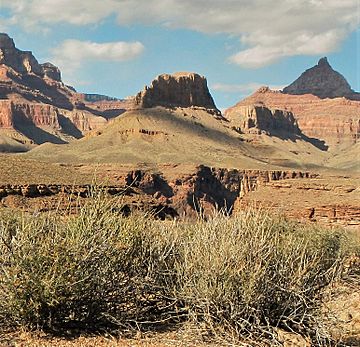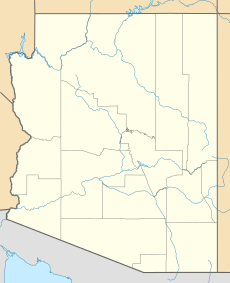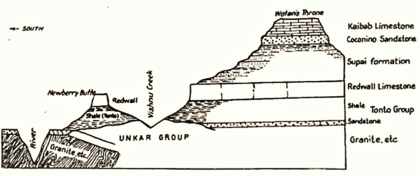Newberry Butte facts for kids
Quick facts for kids Newberry Butte |
|
|---|---|

South aspect, (Vishnu Temple to right)
|
|
| Highest point | |
| Elevation | 5,105 ft (1,556 m) |
| Prominence | 645 ft (197 m) |
| Isolation | 1.29 mi (2.08 km) |
| Parent peak | Peak 5659 |
| Geography | |
| Location | Grand Canyon National Park Coconino County, Arizona, US |
| Parent range | Kaibab Plateau Colorado Plateau |
| Topo map | USGS Cape Royal |
| Type of rock | Redwall Limestone |
| Climbing | |
| First ascent | 1963 by Harvey Butchart |
| Easiest route | class 4 climbing |
Newberry Butte is a cool mountain peak in the amazing Grand Canyon. It stands tall at 5,105 feet (about 1,556 meters) above sea level. You can find it in Coconino County, Arizona, in the southwestern USA. It's about 4.5 miles north of Grandview Point on the South Rim. This butte is super impressive because it rises over 2,500 feet (760 meters) from the Colorado River below!
Why is it Called Newberry Butte?
Newberry Butte is named after John Strong Newberry (1822–1892). He was a geologist who explored the Colorado River in 1858. He was part of an expedition led by Lieutenant Joseph Christmas Ives. They explored the lower Grand Canyon.
After his trip, Newberry told another geologist, John Wesley Powell, that exploring the Grand Canyon by boat would be a great idea. Powell later led his own famous expedition in 1869. The name "Newberry Butte" was officially recognized in 1906 by the United States Board on Geographic Names.
What is a Butte?
A butte is a tall, flat-topped hill with steep sides. It's like a smaller version of a mesa. Newberry Butte is an "erosional remnant." This means it's what's left after wind and water have worn away the softer rock around it over millions of years.
The butte is mostly made of a type of rock called Redwall Limestone. This rock formed a very long time ago, during the Mississippian period. Below the Redwall Limestone, you can find older rocks from the Cambrian period, known as the Tonto Group.
When it rains on Newberry Butte, the water flows southwest. It eventually drains into the Colorado River through a stream called Vishnu Creek.
Gallery








